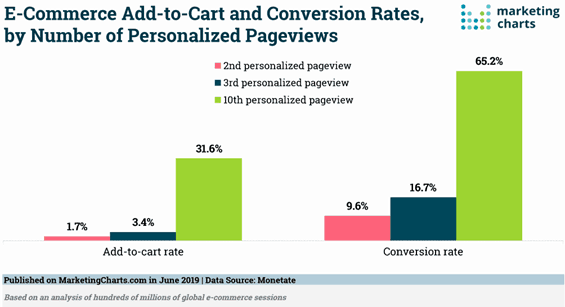
A personalised website is what you would prefer; I am sorry I can’t mention you by name. If I could, I would.
The Internet is intensely personalised. Even Google doesn’t present you with the same results as other people. If you searched for “personalised website” you would get different results to me because Google tries to personalise the results based on your location, your prior search history and the kind of things you click on. You are used to Amazon customising its results for you. Plus, if you use Netflix or other streaming services, they personalise their recommendations to you based on your prior viewing habits. A sizeable slice of your online life is personalised.
We love it when our name is mentioned. Indeed, your own name is one of the most important things in the world. It is central to your identity. It is so vital that you can hear your name being whispered above a noisy background. This is known as “the cocktail party effect” and shows how finely tuned-in to our name we are.
Personalised websites create more sales
Amazon’s personalisation is essential in helping it sell more. Those suggestions as to what else you might like to buy – based upon your shopping habits and searches – bring in about 40% of the company’s revenue. Without this personalisation, Amazon would be around $90bn worse off each year…!
New research, though, shows that it isn’t just simple personalisation that helps. It turns out that what has the greatest impact is deep personalisation. The study shows that conversion rates for sales only start to peak when people have seen several personalised web pages. Far from “over-doing” it with extensive personalisation, it seems that when people see 10 or more personalised pages they really want to buy.

What this study shows is how much personalisation is important to people. The more you show them that the website is “just for them”, the more they feel connected to you. That makes them feel even more liked by your company and makes them want to buy.
One of the main reasons why people do not buy from businesses is because the “company did not make me feel wanted”. In studies of selling by phone, most salespeople give up after the first or second refusal. But most purchases are made after the sixth call. It turns out that people want to be shown how much they are wanted. With fewer phone calls, they think the salesperson is not interested in their business.
One of the main reasons why people do not buy from businesses is because the “company did not make me feel wanted”.
It’s much the same on websites, it seems. Unless your website shows how much it values visitors by personalising as much as possible, then many potential sales are lost. You need to show your visitors a personalised website wherever possible. The more personalised pages your visitors encounter, the better it will be for your business.
How to create a personalised website
There are a number of ways you can personalise your website without going to the expense that Amazon has needed to do in order to achieve its deep personalisation.
- Membership. Get people to become members of your site, ask them some questions about their interests and then email them regularly with suggestions as to what to read on your site.
- Campaigns. Create campaigns around psychographics and then provide links to these “trails” around your site. Promote those links on social media.
- Geography. Provide sections on your website devoted to each geographical region you serve. Change the wording and language to reflect those regions.
- Tools. There are several tools that help with personalisation including Optimizely, Taggstar and Personyze.
- WordPress Plugin. If you use WordPress then try PRZ which can personalise your blog.
You may not be able to personalise your website to the degree that Amazon does. However, the more you make people believe your website is “just for them”, the more you will connect with your visitors and, as the latest research show, the more they will buy.
